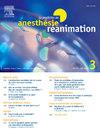Acide tranexamique en obstétrique : quand, comment, à quelle dose et avec quelles précautions ? Analyse de la littérature
Q4 Nursing
引用次数: 0
Abstract
L’acide tranexamique (TXA) est un antifibrinolytique qui a fait la preuve de son efficacité pour réduire le saignement associé à l’hémorragie du postpartum (HPP), sous réserve d’être administré dans les trois heures qui suivent le début de l’HPP à la dose d’au moins 1 gramme renouvelable en cas de coagulopathie. La publication récente des résultats de l’essai WOMAN2, randomisé double aveugle versus placebo chez 16.586 patientes, confirme que l’anémie est un facteur de risque majeur d’HPP et de gravité de l’HPP. L’administration prophylactique de TXA ne réduit pas ce risque. La prévention de l’anémie chez toutes les femmes enceintes est donc un élément central de la gestion du capital sanguin en obstétrique.
Tranexamic acid (TXA) is an antifibrinolytic agent that has been shown to be effective in reducing bleeding associated with postpartum hemorrhage (PPH), provided it is administered within three hours of the onset of PPH at a dose of at least 1 gram, repeatable in cases of coagulopathy. The recent publication of the results of the WOMAN2 trial, a randomized, double-blind, placebo-controlled trial in 16,586 patients, confirms that anemia is a major risk factor for PPH and its severity. Prophylactic administration of TXA does not reduce this risk. Prevention of anemia in all pregnant women is therefore a central element of blood management in obstetrics.
在产科中使用经氨酰胺酸:何时、如何、以何种剂量和采取何种预防措施?文献分析
甲环酸(TXA酸)是一种antifibrinolytique展现了其效率来减少出血与产后出血(HPP)管理的前提下,成为在开始后的三小时l’HPP至少1克的剂量coagulopathie时可再生。最近发表的WOMAN2试验(16,586例患者的随机双盲与安慰剂试验)的结果证实,贫血是HPP和HPP严重程度的主要风险因素。预防性服用TXA并不能降低这种风险。因此,预防所有孕妇的贫血是管理产科血量的一个关键因素。经氨酰胺酸(TXA)是一种抗纤维素溶解剂,已被证明可以有效地减少与产后出血(PPH)相关的出血,只要在PPH开始后3小时内以至少1克的剂量给药,在凝血病病例中可重复使用。WOMAN2试验是一项随机、双盲、安慰剂对照的试验,涉及16,586名患者,最近发表的结果证实,贫血是PPH及其严重程度的主要风险因素。TXA的预防性使用并不能降低这种风险。因此,预防所有孕妇贫血是产科血液管理的一个核心要素。
本文章由计算机程序翻译,如有差异,请以英文原文为准。
求助全文
约1分钟内获得全文
求助全文
来源期刊

Praticien en Anesthesie Reanimation
Medicine-Anesthesiology and Pain Medicine
CiteScore
0.10
自引率
0.00%
发文量
61
审稿时长
51 days
期刊介绍:
Conçu et élaboré pour la formation médicale continue des anesthésistes réanimateurs, Le Praticien en anesthésie réanimation répond à des objectifs clairement définis. - Être au plus près de votre quotidien : la revue vous apporte des réponses immédiatement opérationnelles aux problèmes rencontrés dans votre exercice.
 求助内容:
求助内容: 应助结果提醒方式:
应助结果提醒方式:


